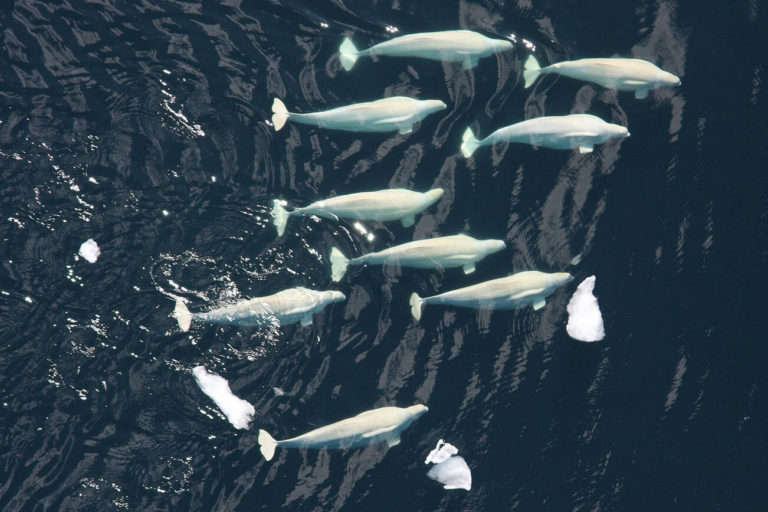Picture Credit: A pod of beluga whales. (NOAA/NMFS/National Marine Mammal Laboratory photo)
Lead author Rhiannon Moore says individual actions can reduce plastic pollution.
A new study from Simon Fraser University researchers has found that microplastics found in the stomachs of beluga whales are working their way from washing machines and up the food chain.
The study, published in the journal of Science of the Total Environment, looked at five species of arctic fish known to be eaten by belugas. Some 21 per cent of fish studied were found to have microplastic particles in their gastrointestinal tracts.
In a previous study, the researchers found belugas can ingest upwards of 145,000 particles of microplastics a year. That study found microplastics in seven different beluga stomachs.
Neither study found a definitive link between consumption of microplastics and declined health in belugas, however, other studies have shown that consumption of larger plastics can lead to the death of marine animals and bird species.
Rhiannon Moore is the lead author of the study and now works as a Zero Waste Outreach Coordinator with the City of Victoria. Moore said the findings of the study are shocking.
“I was initially very surprised because I didn’t expect this amount and this diversity of plastics in whale species that are so remote.”
Microplastic fibres often find their way into the environment through laundry effluent. Textiles and clothing can contain microplastics and they’re estimated to make up 78 per cent of the particles found in the stomachs of fish.
“The particles are so small they don’t end up being trapped and they go straight into the environment,” Moore said. “This study really confirms microplastics are moving through the food chain and they’re moving up the food chain.”
Some communities in northern Canada rely on the belugas for food, but Moore said people who eat beluga aren’t at great risk of consuming microplastics because they don’t consume the stomach.
“We are more exposed to plastic not through eating our food, but in all of our everyday activities. It’s in the air, it lands in our coffee. It’s in plastic containers that our food is kept in. It’s everywhere.”
Moore said the best way to prevent plastics from ending up in wildlife is to reduce the number of plastics people use on a daily basis.
“We can all reduce our plastic footprint even if it’s just by buying less fast-fashion, buying used products, buying locally and bringing your reusable mugs and bags when you go into town. All those things add up and we really need to start looking at the power of our individual actions.”
Article Credit: agassizharrisonobserver

Pingback: Climate change could bring year-round heat waves: UN researcher - SLSV - A global media & CSR consultancy network